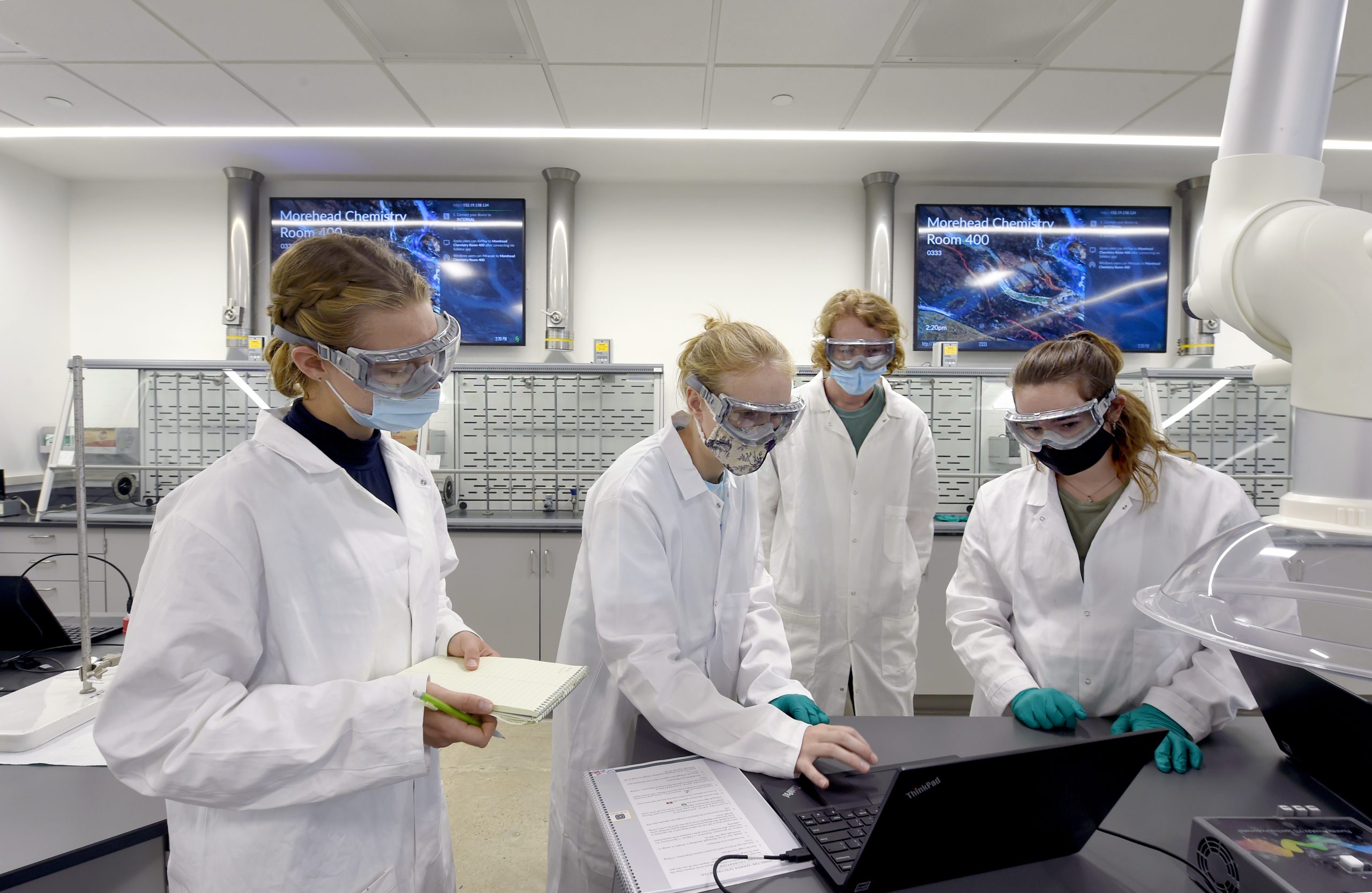The next-generation laboratory made for modern learning and chemistry laboratory training has arrived. The Lab of the Future sets the pace for the future of undergraduate laboratory spaces at Carolina Chemistry.

The next-generation laboratory made for modern learning and chemistry laboratory training has arrived. The Lab of the Future sets the pace for the future of undergraduate laboratory spaces at Carolina Chemistry. The multi-year renovation project brings undergraduate research into the 21st century through the creation of a space that nurtures collaboration, convergence and teamwork between students, setting the precedent for future renovations.
Originally constructed in the 1980s, Morehead Laboratories has housed generations of Carolina undergraduate students from disciplines spanning the University. The lab spaces have seen thousands of students perform their first experiments and inspired the pursuit of careers in chemistry. Modern-day research and learning are defined by convergence, collaboration and teamwork, and that is exactly what the new space has been designed to foster.
“Instead of just working with a single partner or working individually on your lab exercise, there’s a real focus on the reality of what science is today, which is people from different disciplines working together to solve challenges we simply can’t address on our own,” explained Ralph House, associate chair for research.

There are octagonal tables placed in the center of the space to encourage students to interact with each other; students can simply stop by a table to interact with their peers and swiftly move back to their work location. The increased mobility sparks the collaborative spirit the space seeks to cultivate. The monitors that line the periphery of the lab allow students and instructors to connect their laptops to instantaneously visualize and share data.
“Students and instructors can look at the monitors in the space during discussions. This facilitates discussion between groups at different tables,” said House. “With the collaborative spaces occupying the center of the room, it creates open sight lines so people can see and talk to each other easily.”

The upgraded space is strategically designed to promote teamwork in research. Student fume hoods are where the bulk of experiments are performed and line the perimeter of the room. Spaces are strategically placed between the hoods to enable students, working independently or in groups, to take notes alongside their experiment.
“When students are assigned to work in partners, there will be two people per hood. They then regroup to do their data analysis and data interpretation as a group,” said House. “The hoods are spaced out to allow room for laptops so it’s easy to collect data at each of the hoods.”
To maximize the lab space efficiency, a modular bench is located in each lab and can be moved to accommodate a wide-range of scientific equipment. The versatility enables instructors to quickly adapt to changes in course needs. The renovation project comes complete with a new HVAC system, new lighting and upgrades to make the space compliant with The Americans with Disabilities Act (ADA).
The Lab of the Future project was overseen by Nita Eskew, director of undergraduate laboratories and House. The project was managed by Joe Fenton, registered architect.
By Alice Zhao, Department of Chemistry
